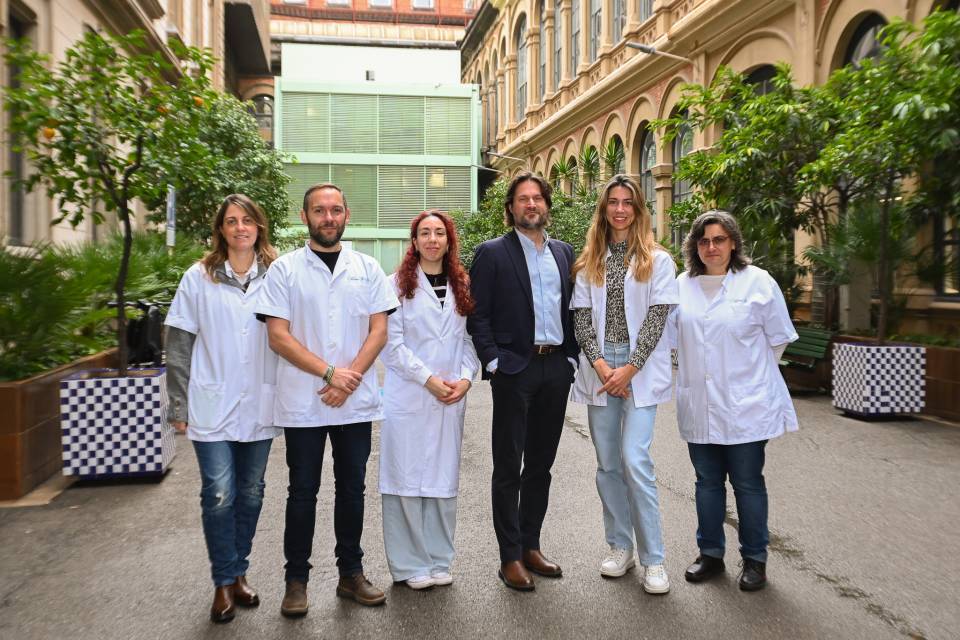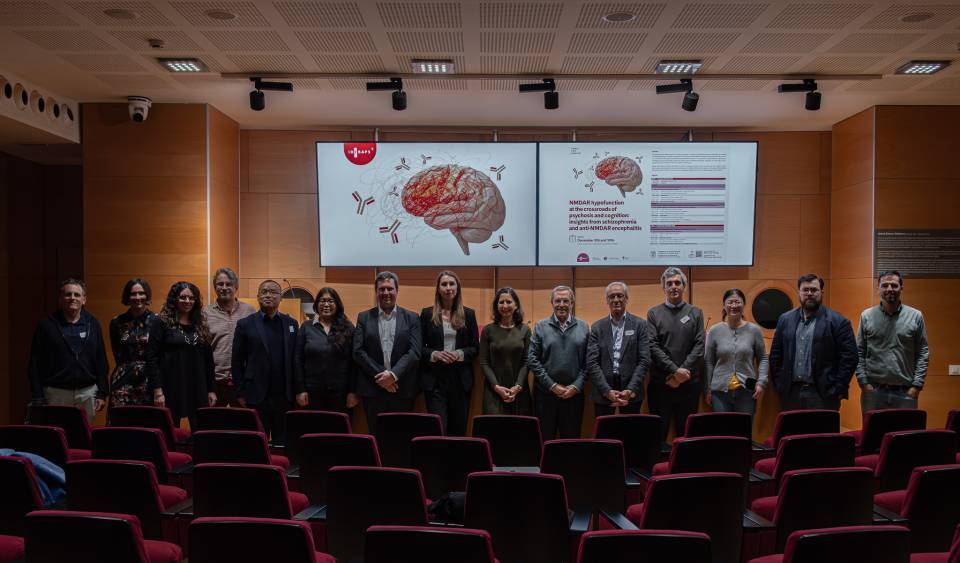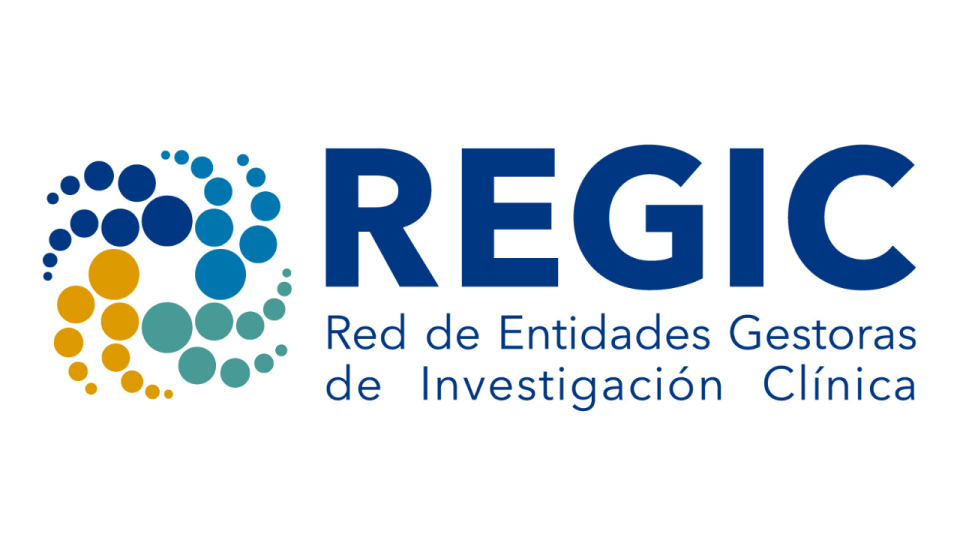An international team of researchers has completed the map of the genetic changes in chronic lymphatic leukemia (CLL). This tool will provide a better understanding of the disease and may lead to more accurate prognoses for patients, improved diagnosis, and the development of new therapies.
The study was published in Nature Genetics and was coordinated by researchers from IDIBAPS-Hospital Clínic and Universitat de Barcelona, Universidad de Oviedo, all the CIBERONC; the Dana-Farber Cancer Institute and the Broad Institute of MIT and Harvard, Boston; and Universität Ulm, Germany.
Chronic lymphatic leukemia (CLL) is a type of blood cancer and is the most common type of leukemia in the western world, with an incidence of around 5 cases per 100,000 inhabitants per year. It is characterized by an increase in the number of B lymphocytes, a type of white blood cells, which can be detected by chance in a routine analysis.
CLL can grow slowly and have a good prognosis, or it can be swift and aggressive. Knowledge of the molecular changes that cause such different courses may make it possible to provide an early prognosis. Previous studies provided fragments of a map of CLL, each focusing on a particular type of patient or with limited data. “The goal of this study was to provide a practically complete catalogue of all the genome abnormalities that cause CLL and its molecular subtypes. It was an immense effort by an international team that analyzed the genome of more than 1000 patients using new bioinformatics tools over more than 4 years”, said Elías Campo, lead co-author of the study, head of the IDIBAPS group Molecular pathology of lymphoid cancers, and CIBERONC researcher.
More than a hundred new genes involved in onset of the disease
To build the map of CLL, the researchers analyzed variations in the genetic sequences, gene expression patterns, and chemical modifications of DNA (genomic, transcriptomic, and epigenomic data) of 1148 patients.
The study identified 202 genes (109 of which were new) that, when mutated, can lead to the onset and progression of the disease. The researchers also perfected the characterization of the subtypes of this leukemia, which differ in their genomic characteristics and in their clinical course. “Beyond the genetic sequences, the expression patterns of certain genes have allowed us to perform a subcategorization of the disease, which provides highly valuable prognostic information”, explained Xose S. Puente, a researcher at the Universidad de Oviedo University Institute of Oncology and at CIBERONC and lead co-author of the study.
The patients’ clinical results were associated with the genomic, transcriptomic, and epigenomic characteristics of their tumors, so that the integration of these data may make it possible to predict a patient’s probability of having a highly indolent disease for many years, experiencing remission after treatment, or the possibility that their leukemia is more aggressive and requires new treatments.
The results of this study may have a major impact on clinical practice, as “the new map will allow us to compare the genomic characteristics of the new patients with data from patients with similar genetic profiles and look at their course and response to different treatments", explained Iñaki Martín-Subero, lead co-author of the study, head of the IDIBAPS group Biomedical epigenomics, and CIBERONC researchers.
An open tool for research
One of the goals of the study is for this information to be available for use by the scientific community in order to advance in the treatment of this disease. For this reason, the map identified in this study has become an interactive web portal so that researchers from all over the world can use it as a resource in their research and can advance knowledge of the causes and characteristics of the different subtypes of CLL.
“The new CLL map allows us to advance toward precision medicine in this disease, as it can help us to more accurately adapt the prognosis and treatment of a new patient based on their particular molecular characteristics”, concluded Elías Campo.
The study was also led by Gad Getz, from the Broad Institute of MIT and Harvard; Catherine Wu, of the Dana-Farber Cancer Institute and Harvard Medical School; and Stephan Stilgenbauer, of Universität Ulm in Germany.
The primary co-authors of the study are Ferran Nadeu and Martí Duran-Ferrer, from IDIBAPS and CIBERONC; Binyamin A. Knisbacher, Broad Institute of MIT and Harvard; Ziao Lin, of Harvard; and Cynthia K. Hahn, of the Dana-Farber Cancer Institute and the Broad Institute of MIT and Harvard.
This study was made possible by funding from Fundació “la Caixa” and from the National Institutes of Health (NIH) and the Broad/IBM Resistance Research Project, with the support of CIBERONC.
Study reference
Molecular map of chronic lymphocytic leukemia and its impact on oBinyamin A. Knisbacher, Ziao Lin, Cynthia K. Hahn, Ferran Nadeu, Martí Duran-Ferrer, Kristen E. Stevenson, Eugen Tausch, Julio Delgado, Alex Barbera-Mourelle, Amaro Taylor-Weiner, Pablo Bousquets-Muñoz, Ander Diaz-Navarro, Andrew Dunford, Shankara Anand, Helene Kretzmer, Jesus Gutierrez-Abril, Sara López-Tamargo, Stacey M. Fernandes, Clare Sun, Mariela Sivina, Laura Z. Rassenti, Christof Schneider, Shuqiang Li, Laxmi Parida, Alexander Meissner, François Aguet, Jan A. Burger, Adrian Wiestner, Thomas J. Kipps, Jennifer R. Brown, Michael Hallek, Chip Stewart, Donna S. Neuberg, José I. Martín-Subero, Xose S. Puente, Stephan Stilgenbauer, Catherine J. Wu, Elias Campo & Gad Getzutcome Molecular map of chronic lymphocytic leukemia and its impact on outcome Nat Genet (2022). https://doi.org/10.1038/s41588-022-01140-w




